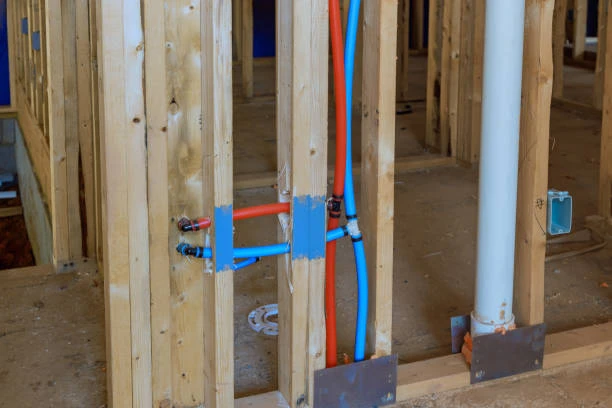
Summary: Breaking Down the Cleaning Myths
There’s a popular myth going around: using steel wool to clean stainless steel toilet shower hoses will keep them shiny and spotless. But is that really true? Or could it be doing more harm than good? In this article, we break down the truth about cleaning your toilet shower hose, especially when it comes to using steel wool. We’ll also walk you through maintenance tips, common uses, materials comparison, and expert installation advice. If you’re dealing with stainless steel hoses and want to keep them in top shape—this is the guide for you.
Frequently Asked Questions About Toilet Shower Hoses
Is it safe to clean stainless steel hoses with steel wool?
No, it’s not recommended. Steel wool is abrasive and can scratch the surface of stainless steel, leaving it vulnerable to rust, especially in wet environments like bathrooms.
What’s the best way to clean a toilet shower hose?
Use a soft cloth or sponge with mild detergent or white vinegar. For tough grime, a non-abrasive brush works well without damaging the metal.
Can cleaning damage the hose’s internal lining?
Yes, using harsh chemicals or high-pressure water can damage the inner lining over time. Always choose gentle cleaning methods to maintain both appearance and function.
How often should I clean my toilet shower hose?
Ideally, clean it once every 1–2 weeks. This prevents buildup of limescale and bacteria, especially in high-humidity environments.
Do all hoses require the same care routine?
No. PVC hoses are more sensitive to heat and chemicals, while stainless steel is tougher but still needs careful handling to avoid scratches.
What Is a Toilet Shower Hose? Basic Definition and Features
Understanding the Function
A toilet shower hose—also known as a bidet sprayer hose or shattaf hose—is a flexible, water-conducting tube that connects the water supply to a handheld spray head near the toilet. It’s used for personal hygiene, especially in regions where water is preferred over toilet paper.
Key Features of a Good Toilet Shower Hose
Flexible but durable
Corrosion-resistant, often made from stainless steel or reinforced PVC
Standard fittings (usually 1/2″ BSP)
Leak-proof washers
Heat and pressure resistance
Common Uses and Applications
In Modern Toilets and Bathrooms
Toilet shower hoses have become a staple in homes thanks to their efficiency and hygiene benefits. They’re easy to use and space-saving, especially in compact bathrooms.
In Healthcare and Hygiene-Focused Settings
In hospitals, elderly care centers, and nursing homes, toilet shower hoses offer comfort, sanitation, and independence for patients and caregivers. Hotels increasingly add toilet shower hoses to bathrooms, especially in regions where bidet culture is standard. They’re valued for cleanliness and user comfort.
Buying Guide: How to Choose the Right Toilet Shower Hose
Picking the Right Material
| Material | Pros | Cons |
|---|---|---|
| Stainless Steel | Durable, corrosion-resistant | Can scratch if cleaned poorly |
| Reinforced PVC | Lightweight, flexible | May degrade faster |
| Nylon Hybrid | Soft touch, modern look | Slightly higher price |
Color and Finish Matching
Choose finishes that complement your bathroom:
Chrome for sleek and modern spaces
Matte black for a luxury feel
White or beige for minimalistic bathrooms
Key Certifications to Look For
ISO 9001: Overall manufacturing quality
CE Mark: Safety and compliance
WRAS (UK): Safe for potable water systems
Installation Guide for Toilet Shower Hoses
Tools Needed
Adjustable wrench
Teflon tape (optional)
Soft cloth (to protect surfaces)
Easy Step-by-Step Setup
Turn off the main water valve.
Unscrew the old hose (if replacing).
Attach the new hose to the bidet spray head.
Connect the other end to the water valve.
Hand-tighten, then lightly wrench-tighten.
Turn water on and check for leaks.
Mistakes to Avoid During Installation
Over-tightening, which can crack connectors
Forgetting rubber washers, which causes leaks
Using incompatible sizes (double-check thread type)
Material Comparison: Stainless Steel vs Other Options
Written Comparison Table
| Feature | Stainless Steel Hose | Reinforced PVC Hose | Copper Piping |
|---|---|---|---|
| Flexibility | High | High | Low |
| Durability | Very high | Medium | Very high |
| Appearance | Modern and shiny | Neutral | Industrial |
| Installation Ease | Easy | Easy | Difficult |
| Cleaning Sensitivity | Scratches with steel wool | Sensitive to chemicals | Not relevant |
| Cost | Medium | Low | High |
Conclusion
Despite what you might hear, steel wool and stainless steel don’t mix well—especially when it comes to cleaning your toilet shower hose. Scratches can reduce the lifespan of your hose and make it more prone to rust and bacteria. Instead, stick to gentle cleaning methods and invest in a high-quality hose that’s built to last. Whether you’re buying for your home, hotel, or healthcare facility, the right hose makes all the difference in hygiene, durability, and comfort.
Connect with IFNS for Durable and Safe Toilet Shower Hoses
IFNS is a trusted name in plastic and metal piping systems with over 30 years of manufacturing experience. From toilet shower hoses to complete plumbing solutions, IFNS offers reliable and cost-effective products that meet global quality standards.
We respond to inquiries within 24 hours. Reach out for detailed specs, pricing, or technical advice.







